Abstract
A new method for relating regional intravascular resistance to pulmonary arterial, capillary, and venous pressure and volume was used to evaluate local differences of reactivity in the pulmonary blood vessels in the isolated lung lobe of the dog.
Intravascular infusion of isoproterenol caused active dilatation of pulmonary arteries and veins. Capillary conductance (1/resistance) and volume increased, possibly as a result of the opening of previously closed capillaries. Serotonin infusion caused active constriction of both the pulmonary arteries and veins. A low dose of serotonin (1.5 μg/min per kg) caused predominant constriction of whichever vessels were upstream (arteries during forward perfusion, veins during reverse perfusion). A high dose of serotonin (4.5-5.0 μg/min per kg) caused constriction of both upstream and downstream vessels. Metabolic inactivation of serotonin by the lung is suggested as an explanation for these observations. Histamine infusion caused predominant venous constriction whether veins were upstream or downstream. Capillary volume and conductance decreased during forward and reverse perfusion, perhaps as a result of pericapillary edema formation. Large arterial vessels constricted slightly, whereas small arterial vessels appeared to be passively dilated.
Full text
PDF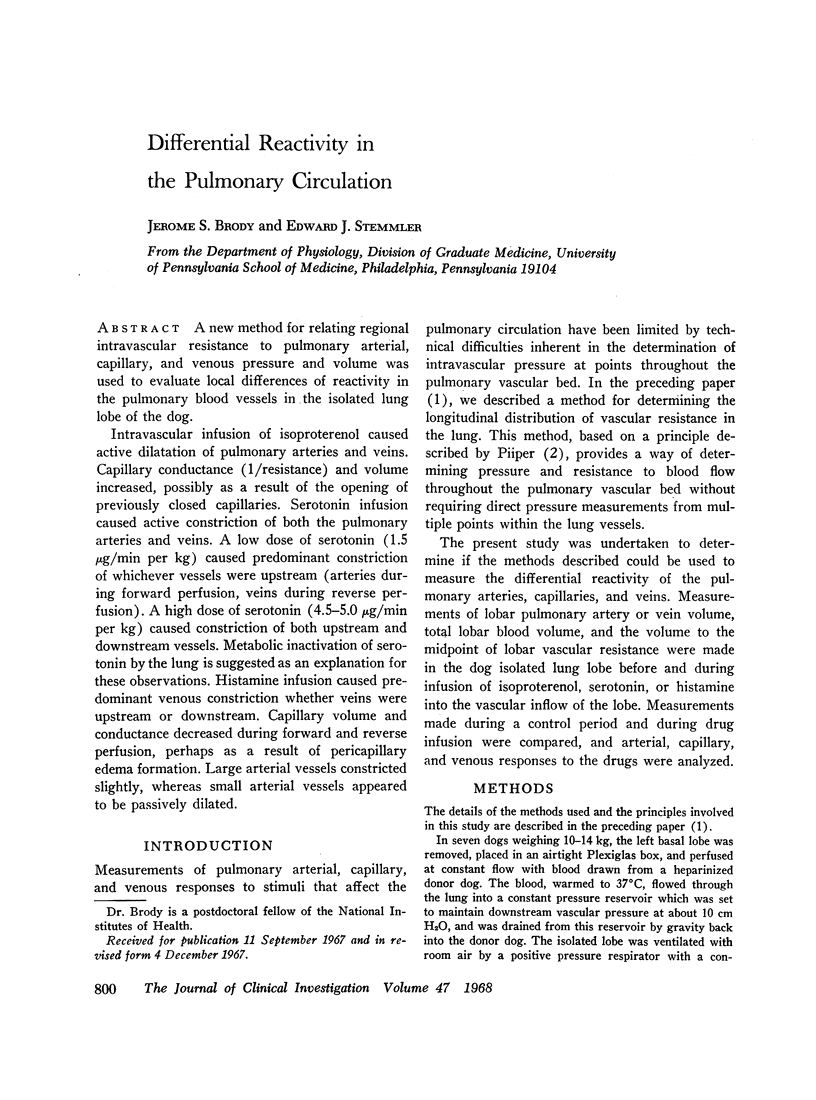
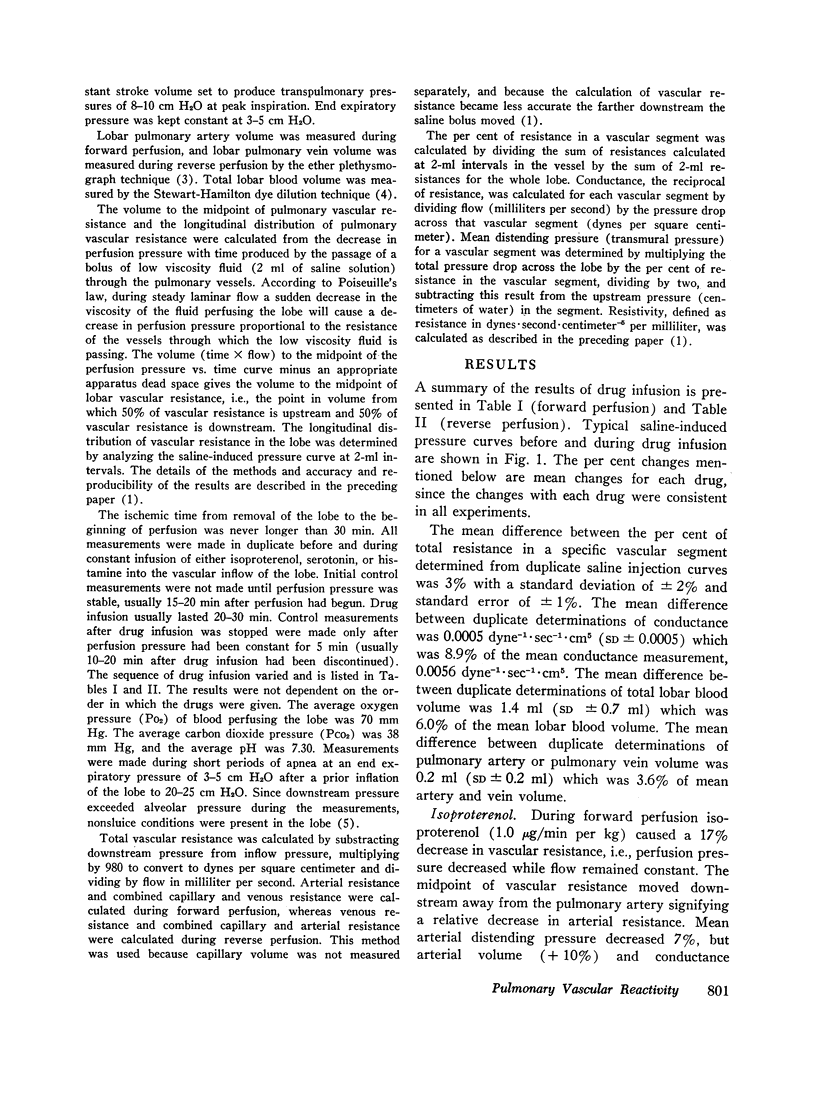
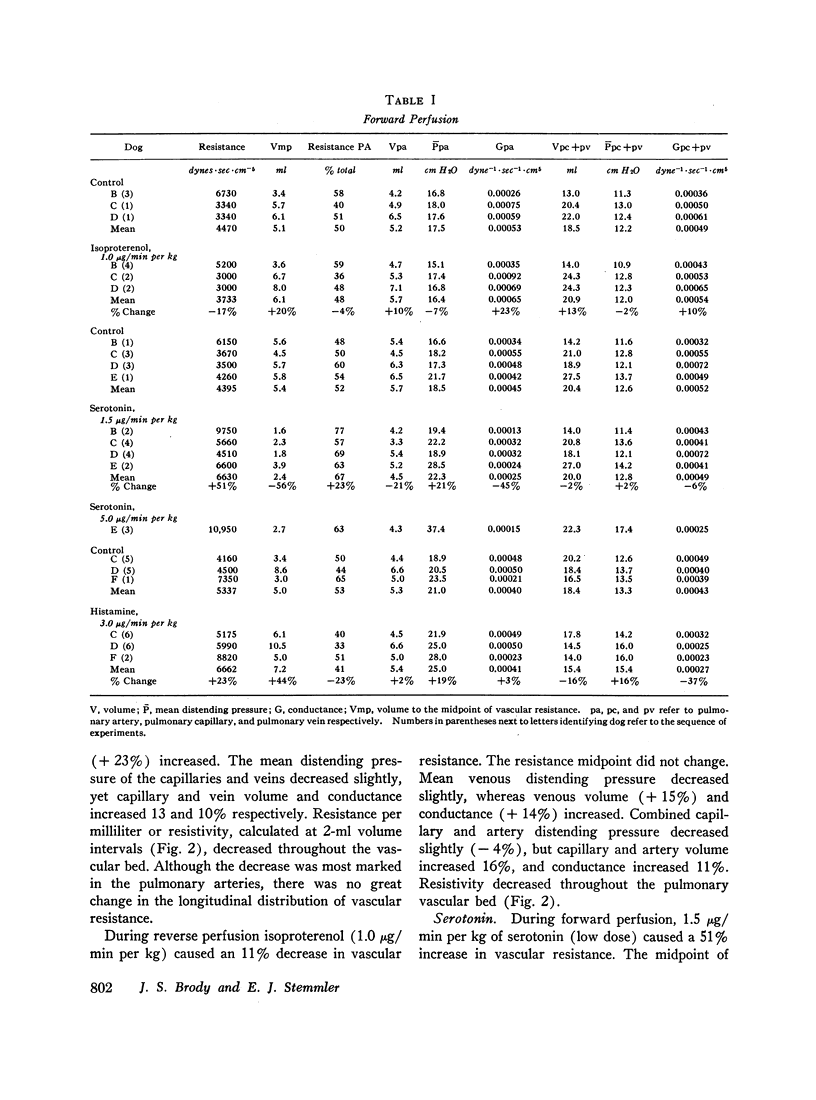
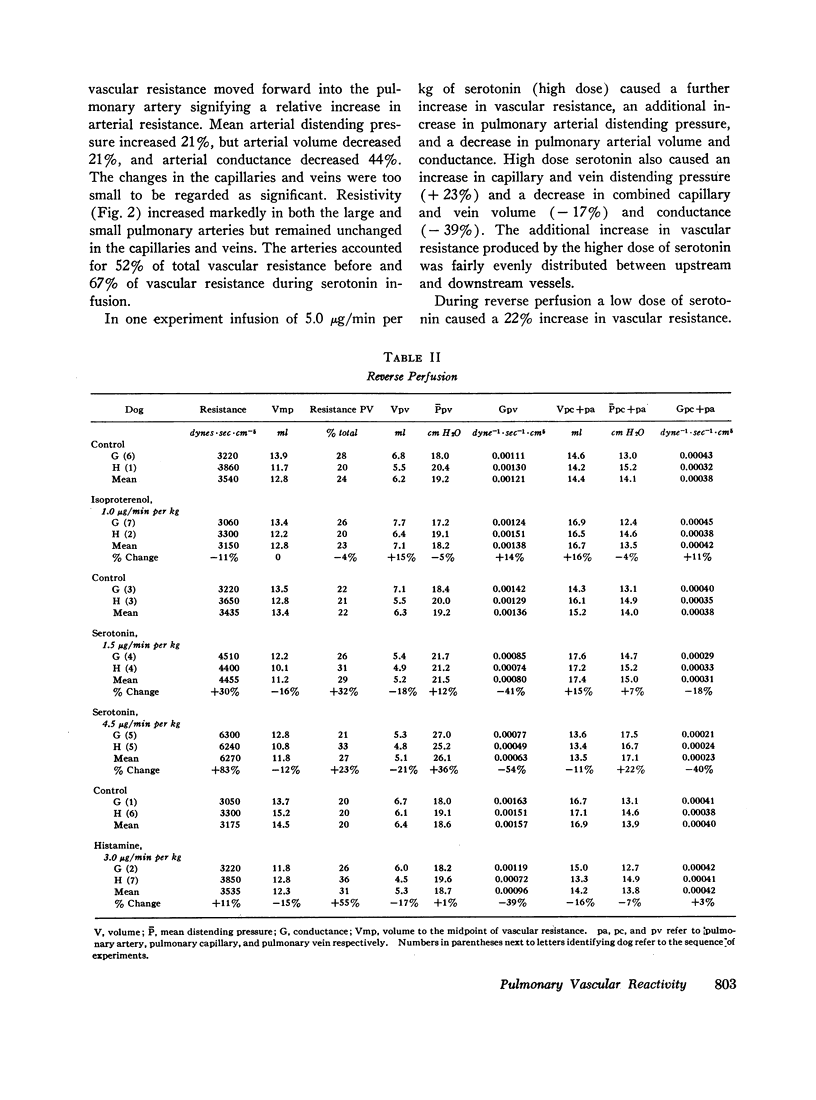
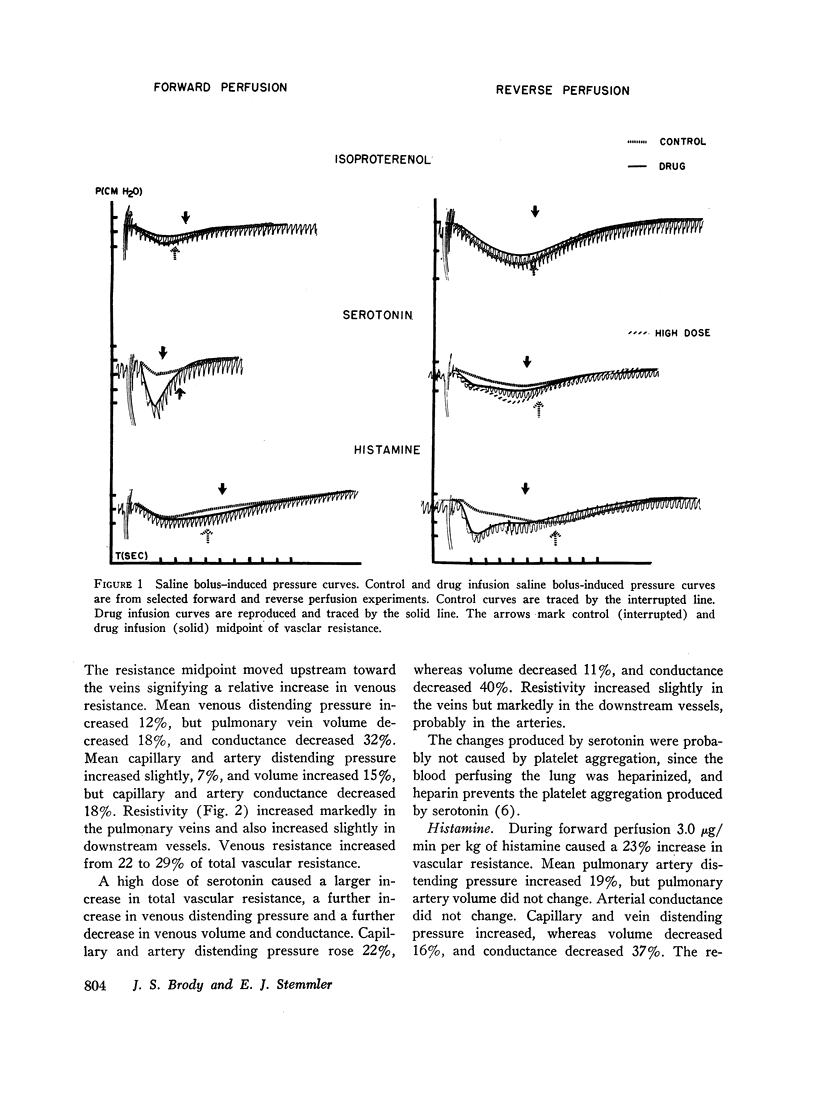
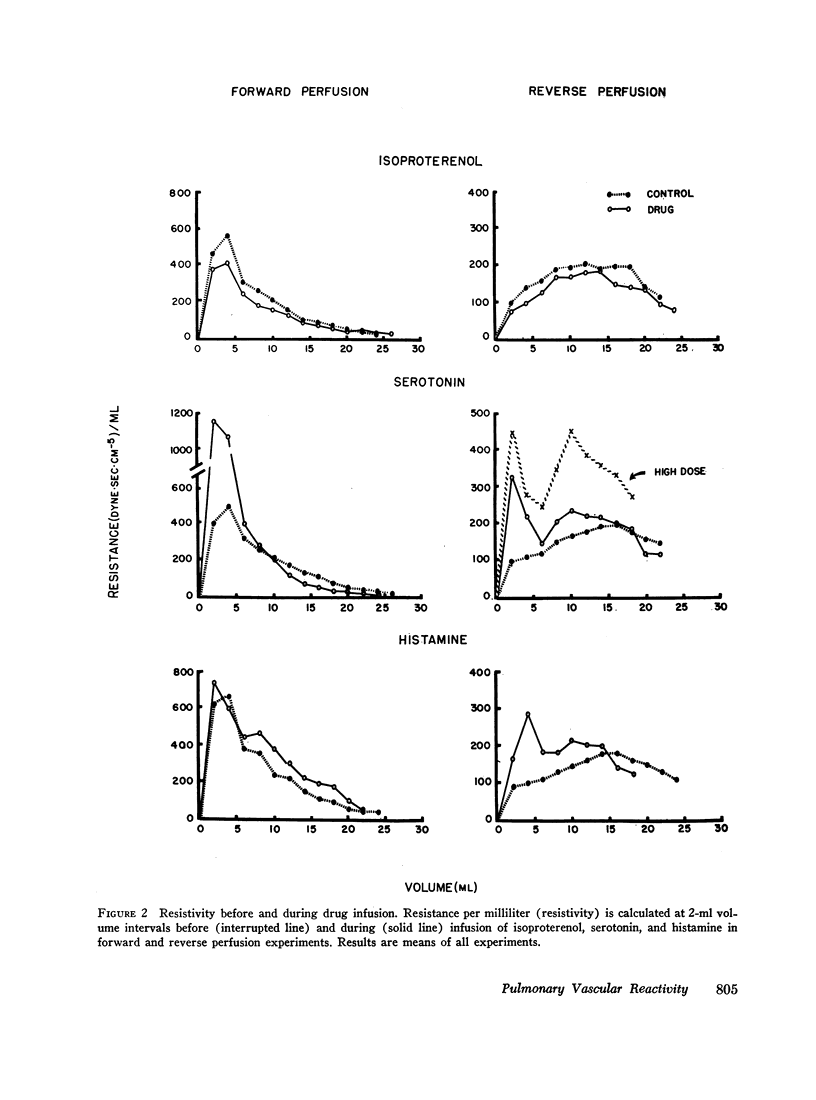
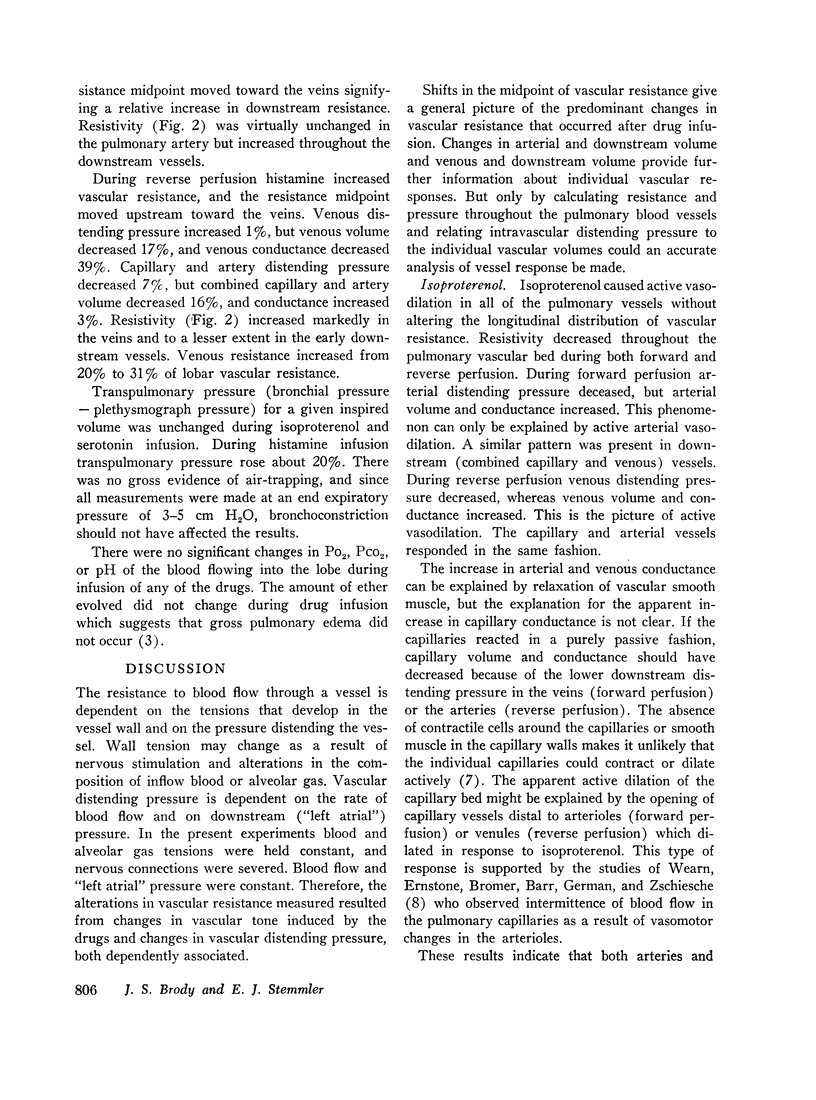
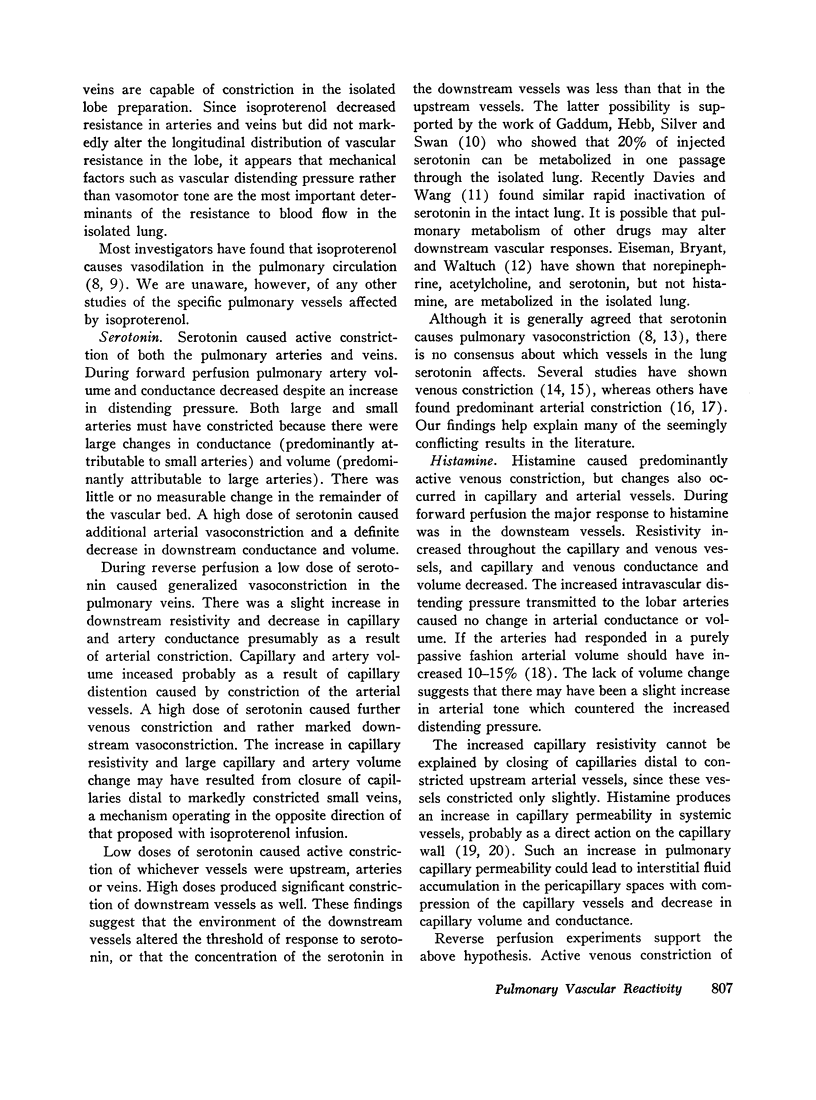
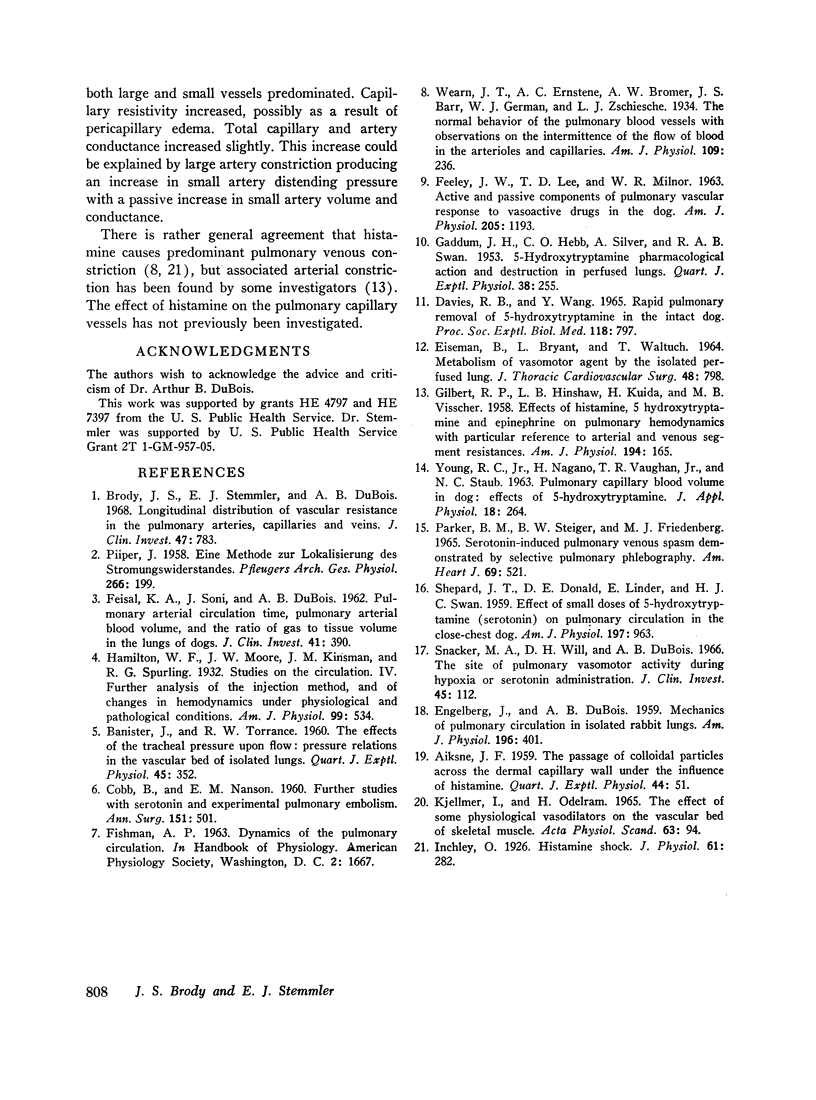
Selected References
These references are in PubMed. This may not be the complete list of references from this article.
- BANISTER J., TORRANCE R. W. The effects of the tracheal pressure upon flow: pressure relations in the vascular bed of isolated lungs. Q J Exp Physiol Cogn Med Sci. 1960 Oct;45:352–367. doi: 10.1113/expphysiol.1960.sp001491. [DOI] [PubMed] [Google Scholar]
- Brody J. S., Stemmler E. J., DuBois A. B. Longitudinal distribution of vascular resistance in the pulmonary arteries, capillaries, and veins. J Clin Invest. 1968 Apr;47(4):783–799. doi: 10.1172/JCI105773. [DOI] [PMC free article] [PubMed] [Google Scholar]
- COBB B., NANSON E. M. Further studies with serotonin and experimental pulmonary embolism. Ann Surg. 1960 Apr;151:501–506. doi: 10.1097/00000658-196004000-00009. [DOI] [PMC free article] [PubMed] [Google Scholar]
- DAVIS R. B., WANG Y. RAPID PULMONARY REMOVAL OF 5-HYDROXYTRYPTAMINE IN THE INTACT DOG. Proc Soc Exp Biol Med. 1965 Mar;118:797–800. doi: 10.3181/00379727-118-29974. [DOI] [PubMed] [Google Scholar]
- EISEMAN B., BRYANT L., WALTUCH T. METABOLISM OF VASOMOTOR AGENTS BY THE ISOLATED PERFUSED LUNG. J Thorac Cardiovasc Surg. 1964 Nov;48:798–806. [PubMed] [Google Scholar]
- ENGELBERG J., DUBOIS A. B. Mechanics of pulmonary circulation in isolated rabbit lungs. Am J Physiol. 1959 Feb;196(2):401–414. doi: 10.1152/ajplegacy.1959.196.2.401. [DOI] [PubMed] [Google Scholar]
- FEELEY J. W., LEE T. D., MILNOR W. R. ACTIVE AND PASSIVE COMPONENTS OF PULMONARY VASCULAR RESPONSE TO VASOACTIVE DRUGS IN THE DOG. Am J Physiol. 1963 Dec;205:1193–1199. doi: 10.1152/ajplegacy.1963.205.6.1193. [DOI] [PubMed] [Google Scholar]
- FEISAL K. A., SONI J., DUBOIS A. B. Pulmonary arterial circulation time, pulmonary arterial blood volume, and the ratio of gas to tissue volume in the lungs of dogs. J Clin Invest. 1962 Feb;41:390–400. doi: 10.1172/JCI104493. [DOI] [PMC free article] [PubMed] [Google Scholar]
- GADDUM J. H., HEBB C. O., SILVER A., SWAN A. A. 5-Hydroxytryptamine; pharmacological action and destruction in perfused lungs. Q J Exp Physiol Cogn Med Sci. 1953;38(4):255–262. doi: 10.1113/expphysiol.1953.sp001037. [DOI] [PubMed] [Google Scholar]
- GILBERT R. P., HINSHAW L. B., KUIDA H., VISSCHER M. B. Effects of histamine, 5 hydroxytryptamine and epinephrine on pulmonary hemodynamics with particular reference to arterial and venous segment resistances. Am J Physiol. 1958 Jul;194(1):165–170. doi: 10.1152/ajplegacy.1958.194.1.165. [DOI] [PubMed] [Google Scholar]
- Inchley O. Histamine shock. J Physiol. 1926 Apr 23;61(2):282–293. doi: 10.1113/jphysiol.1926.sp002292. [DOI] [PMC free article] [PubMed] [Google Scholar]
- KJELLMER I., ODELRAM H. THE EFFECT OF SOME PHYSIOLOGICAL VASODILATORS ON THE VASCULAR BED OF SKELETAL MUSCLE. Acta Physiol Scand. 1965 Jan-Feb;63:94–102. doi: 10.1111/j.1748-1716.1965.tb04046.x. [DOI] [PubMed] [Google Scholar]
- PARKER B. M., STEIGER B. W., FRIEDENBERG M. J. SEROTONIN-INDUCED PULMONARY VENOUS SPASM DEMONSTRATED BY SELECTIVE PULMONARY PHLEBOGRAPHY. Am Heart J. 1965 Apr;69:521–528. doi: 10.1016/0002-8703(65)90423-0. [DOI] [PubMed] [Google Scholar]
- PIIPER J. Eine Methode zur Lokalisierung des Strömungswiderstandes. Pflugers Arch. 1958;266(2):199–206. doi: 10.1007/BF00363649. [DOI] [PubMed] [Google Scholar]
- SHEPHERD J. T., DONALD D. E., LINDER E., SWAN H. J. Effect of small doses of 5-hydroxytryptamine (serotonin) on pulmonary circulation in the closed-chest dog. Am J Physiol. 1959 Nov;197:963–967. doi: 10.1152/ajplegacy.1959.197.5.963. [DOI] [PubMed] [Google Scholar]
- Sackner M. A., Will D. H., DuBois A. B. The site of pulmonary vasomotor activity during hypoxia or serotonin administration. J Clin Invest. 1966 Jan;45(1):112–121. doi: 10.1172/JCI105315. [DOI] [PMC free article] [PubMed] [Google Scholar]
- YOUNG R. C., Jr, NAGANO H., VAUGHAN T. R., Jr, STAUB N. C. Pulmonary capillary blood volume in dog: effects of 5-hydroxytryptamine. J Appl Physiol. 1963 Mar;18:264–268. doi: 10.1152/jappl.1963.18.2.264. [DOI] [PubMed] [Google Scholar]


